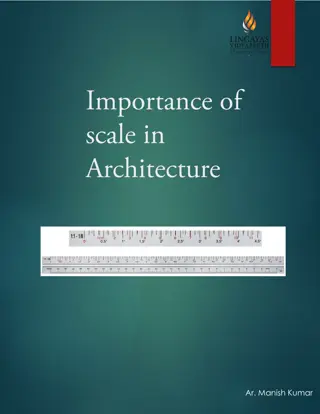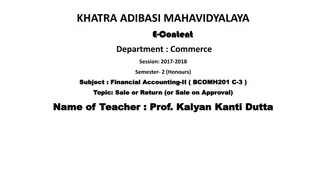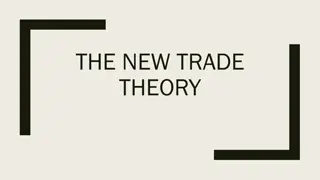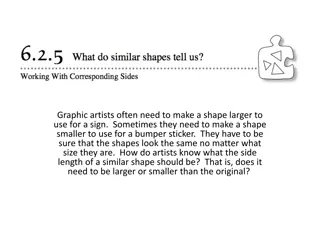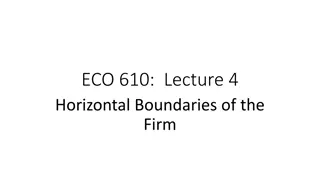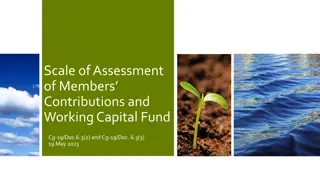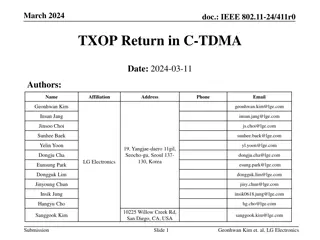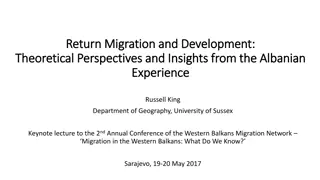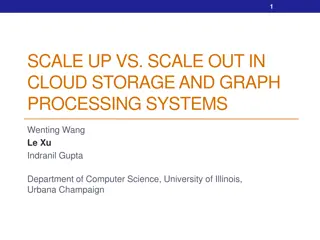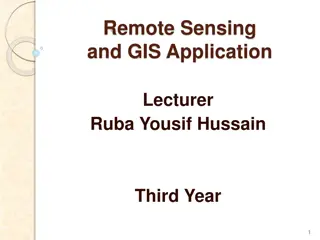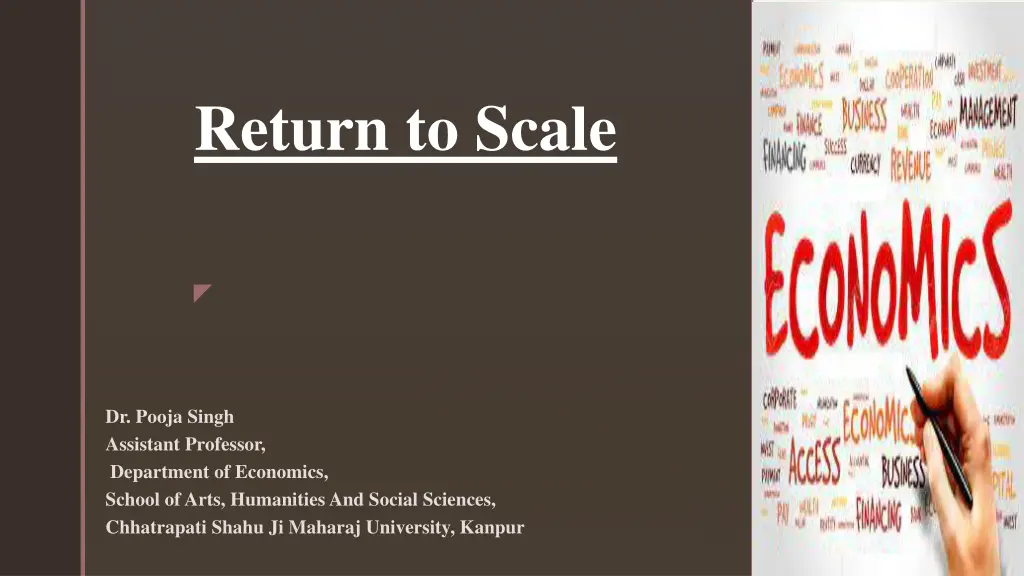
Understanding Return to Scale in Economics
Learn about Return to Scale in economics with Dr. Pooja Singh, Assistant Professor at Chhatrapati Shahu Ji Maharaj University, Kanpur. Discover the concept of Return to Scale and its three stages - Increasing, Constant, and Diminishing Returns to Scale. Explore how changes in factors affect output and the references for further study.
Download Presentation

Please find below an Image/Link to download the presentation.
The content on the website is provided AS IS for your information and personal use only. It may not be sold, licensed, or shared on other websites without obtaining consent from the author. If you encounter any issues during the download, it is possible that the publisher has removed the file from their server.
You are allowed to download the files provided on this website for personal or commercial use, subject to the condition that they are used lawfully. All files are the property of their respective owners.
The content on the website is provided AS IS for your information and personal use only. It may not be sold, licensed, or shared on other websites without obtaining consent from the author.
E N D
Presentation Transcript
Return to Scale Dr. Pooja Singh Assistant Professor, Department of Economics, School of Arts, Humanities And Social Sciences, Chhatrapati Shahu Ji Maharaj University, Kanpur
Return to Scale Return to Scale Return to Scale refers to the change in output as all factors change by the same proportion .This is a long term conception. All the factors are variable in long run. No factors are fixed. A production of a product can increase by increasing all factors in similar ratio or different ratios in long run. Constant return to scale Input = Output Three Stages Increasing return to scale Output>Input Decreasing return to scale Output<Input Dr. Pooja Singh, Assistant Professor, Department of Economics, School of Arts, Humanities And Social Sciences, Chhatrapati Shahu Ji Maharaj University, Kanpur
Return to Scale Dr. Pooja Singh, Assistant Professor, Department of Economics, School of Arts, Humanities And Social Sciences, Chhatrapati Shahu Ji Maharaj University, Kanpur
Return to Scale Increasing Returns to Scale: I Stage Increasing Returns to Scale occurs when a given percentage increase in all factor inputs (in some constant ratio) causes proportionately greater increase in output. Constant Returns to Scale :II Stage Constant returns to scale occurs when a given percentage increase in all factor inputs (in some constant ratio) causes equal percentage increase in output. Diminishing Returns to Scale :III Stage Diminishing returns to scale occurs when given percentage increase in all factor inputs (in some constant ratio) causes proportionately less increase in output. Dr. Pooja Singh, Assistant Professor, Department of Economics, School of Arts, Humanities And Social Sciences, Chhatrapati Shahu Ji Maharaj University, Kanpur
Return to Scale Dr. Pooja Singh, Assistant Professor, Department of Economics, School of Arts, Humanities And Social Sciences, Chhatrapati Shahu Ji Maharaj University, Kanpur
Return to Scale References Dwivedi D N, Managerial Economics, Vikas Publishing House Pvt. Ltd, 2006 Samuelson, Paul A; Nordhaus, William D. (2014). Economics. Boston, Mass: Irwin McGraw-Hill Dr. Pooja Singh, Assistant Professor, Department of Economics, School of Arts, Humanities And Social Sciences, Chhatrapati Shahu Ji Maharaj University, Kanpur


